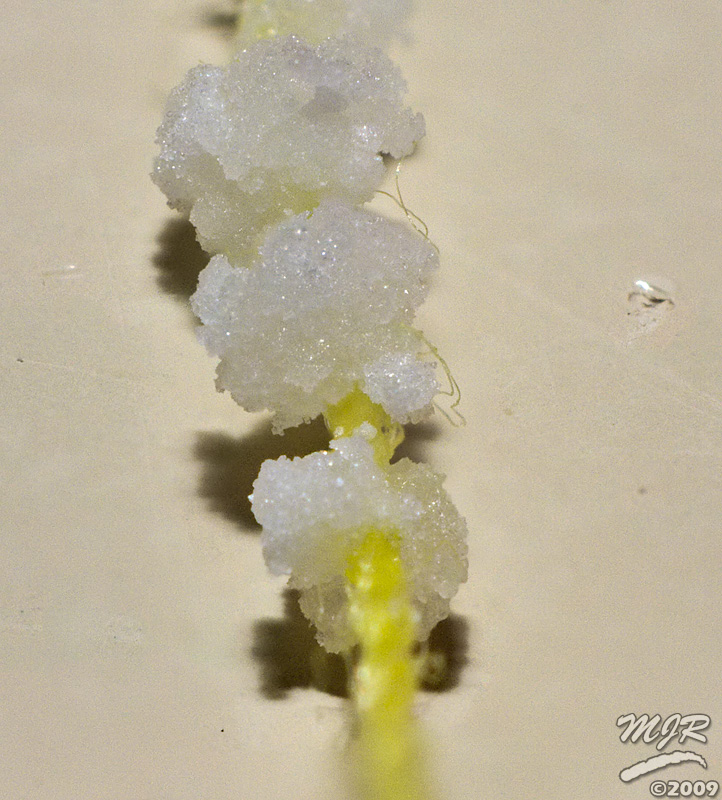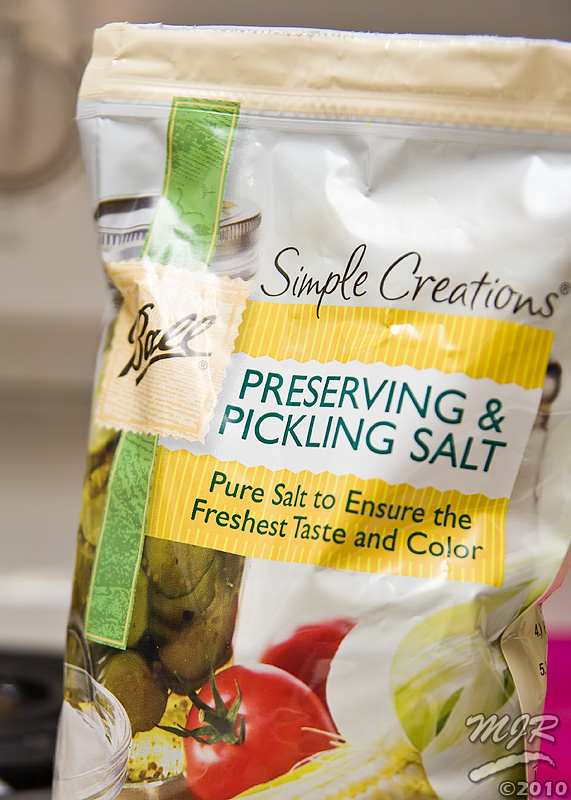 Lets say for a moment you and your kids decide to do a science experiment. You want to grow crystals. Great! There are lots of resources out there that tell you how to do all sorts of crystals. One of which is salt. Ordinary Table Salt.
Lets say for a moment you and your kids decide to do a science experiment. You want to grow crystals. Great! There are lots of resources out there that tell you how to do all sorts of crystals. One of which is salt. Ordinary Table Salt.So you and your family set out to grow beautiful cubic crystals. You heat up some water, and dump tons of salt in the water until nothing will dissolve anymore. You pour your supersaturated solution of good old sodium chloride into a cup, and dangle a string in the cup. You wait..... and wait... and wait. A week passes, and you have nothing to show for it at all. The sugar crystals came out great, but sugar is so pedestrian. The cubic salt crystals would have been so much better, but it's a total no-go. What happened?
I've wondered about this since I was a kid and tried to grow sugar crystals and salt crystals. Sugar did fine, but I really wanted to see the cool cubes of salt. It didn't work. Recently, I tried to grow salt again, prompted by seeing a huge crystal of salt on the show "How It's Made." So, I set about growing salt, being careful to make sure the pan was clean, the glass was clean, and everything was ideal, even filtering the undissolved crystals through a coffee filter. After about a week, I checked on my project. The results were disappointing to say the least. A few microscopic crystals formed near the surface of the water, and a cauliflower-like mass formed around the pencil suspending the string. Something was seriously wrong. A quick look at the ingredients gives a clue: There are two impurities in the salt; an iodine compound (a necessary nutritional supplement. Most table salt is iodized) and an anti-caking agent. I suspect this is more the culprit than the iodine itself, since the iodine needed is relatively small in relation to the salt. Not only that, but the purpose of the anti-caking compound is to interfere with the salt's ability to build a crystal lattice.
In fact, most salts in the store (even those without the iodine) have some sort of anti-caking agent. Most, but not all. Salt used in the canning process is completely pure. This can be found near the canning jars and lids. After preparing a new solution using this salt, the difference was very apparent. The solution as it cooled formed a film of crystals at the surface, and seemed to be brimming with glinting, brilliant "diamond dust" I filtered the solution and hung my string in this new solution, and set it in a place where it will be relatively undisturbed. Within minutes tiny needles began to form in the water, and sink to the bottom, in a couple hours crystals were already starting to form on the string. Success at last!
The next stage will be to take an ideal specimen from the crystals formed by the solution and attach it to some nylon fishing line to use as a seed for the final large crystal. Stay tuned!



